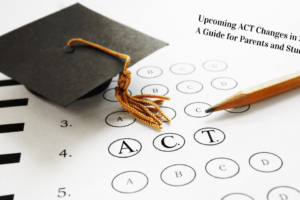
5 Points Students With Disabilities Should Know About Their IEPs
 Students with disabilities often have only vague notions about the content of their IEPs. Transition interviews too often reveal that many of these students have a weak understanding of the services they receive. Some don’t know why they have IEPs. Teachers and parents can take an important step in empowering students by explaining their IEPs to them. To the greatest extent possible, students with disabilities should be able to advocate for themselves. They can do this best in school if they understand their IEPs.
Students with disabilities often have only vague notions about the content of their IEPs. Transition interviews too often reveal that many of these students have a weak understanding of the services they receive. Some don’t know why they have IEPs. Teachers and parents can take an important step in empowering students by explaining their IEPs to them. To the greatest extent possible, students with disabilities should be able to advocate for themselves. They can do this best in school if they understand their IEPs.
Below are several points students with disabilities should know about their IEPs. Not all students with IEPs will be capable of understanding what their IEPs entail, but teachers and parents can use this list as the basics of what any student should know. Please note, these aren’t necessarily components of IEPs, but rather are practical ideas about IEPs that students should grasp.
1. Disability – The IEP will not detail the nature of a student’s disability; the student’s evaluation will do that. The IEP will mention the disability though, at least according to the disability categories under IDEA. Students with IEPs should be able to at least state their disability if not explain it and how it affects them. Being able to describe it to some degree will help them understand the rest of the IEP.
2. Rationale – Students should be able to connect their disability to why they have an IEP. This connection should be twofold. First, they should know that an IEP is simply a set of services for a student who qualifies for these services by the virtue of having a particular set of needs caused by a disability. Any student with a disability that interferes with learning can have one. Second, they should know that the IEP isn’t in place because they’re not smart enough to do schoolwork. It’s there to remove any barriers to learning the disability might cause and to provide individualized support. Teams should help students understand the IEP isn’t meant to separate them from anyone. It’s meant to do the opposite by providing access.
3. Levels – Every IEP will include statements of present levels of performance. These might include reading and mathematics levels, standardized testing scores, and class performance. To help students understand how their disabilities affect performance, teachers and parents should explain present levels. While this might seem potentially stigmatizing, students—especially high school students—should have a solid and realistic understanding of their abilities. Having this understanding helps with transition planning.
4. Accommodations – The goals and objectives of each annual IEP are critical, but the specially designed instruction is special education in practice. Students should know their accommodations. They should know why they have them and how they relate to their disability. They should know when they should receive them. If possible, they should have a hand in selecting them. Teachers and parents should be sure these students know that the accommodations in the IEP are a right. Denial of these accommodations is discrimination. A goal for each should be to get the student to understand the accommodations well enough to be comfortable requesting them.
5. Permanence – Critics of special education often refer to the labels it assigns to students. Disabilities typically stay with a person. IEPs do not, however. Each IEP is meant to last one year. Sometimes students reach a point at which they no longer need an IEP. Many students (although certainly not a majority) exit special education services. Well in advance of graduation, students should know that their IEPs end when high school ends. They also should know that this doesn’t mean that no services are available to them as adults. Any good transition program will include some information about disability law and the rights of adults with disabilities. Finally, students and parents should understand that the law allows parents to revoke consent for special education services at any time. Families don’t have to receive the services if they change their minds about wanting them. Special education is by no means permanent.
For some students with IEPs, a more detailed understanding will be possible. A familiarity with the points above will help students with disabilities get the most out of their programs. Teachers and parents have the responsibility of imparting these points to the students who will benefit from them.
Written by Jeff Hartmann



